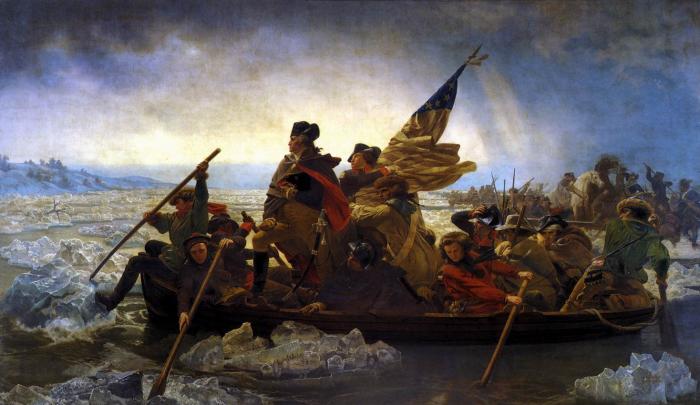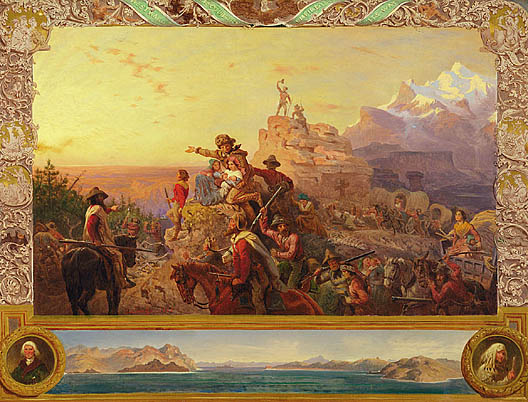Emanuel Gottlieb Leutze (1816 – 1868)
Get a Leutze Certificate of Authenticity for your painting (COA) for your Leutze drawing.
For all your Leutze artworks you need a Certificate of Authenticity (COA) in order to sell, to insure or to donate for a tax deduction.
Getting a Leutze Certificate of Authenticity (COA) is easy. Just send us photos and dimensions and tell us what you know about the origin or history of your Leutze painting or drawing.
If you want to sell your Leutze painting or drawing use our selling services. We offer Leutze selling help, selling advice, private treaty sales and full brokerage.
We have been authenticating Leutze and issuing certificates of authenticity since 2002. We are recognized Leutze experts and Leutze certified appraisers. We issue COAs and appraisals for all Leutze artworks.
Our Leutze paintings and drawings authentications are accepted and respected worldwide.
Each COA is backed by in-depth research and analysis authentication reports.
The Leutze certificates of authenticity we issue are based on solid, reliable and fully referenced art investigations, authentication research, analytical work and forensic studies.
We are available to examine your Leutze painting or drawing anywhere in the world.
You will generally receive your certificates of authenticity and authentication report within two weeks. Some complicated cases with difficult to research Leutze paintings or drawings take longer.
Our cLeutzents include Leutze collectors, investors, tax authorities, insurance adjusters, appraisers, valuers, auctioneers, Federal agencies and many law firms.
We perform Emanuel Leutze art authentication, appraisal, certificates of authenticity (COA), analysis, research, scientific tests, full art authentications. We will help you sell your Emanuel Leutze or we will sell it for you.

Emanuel Leutze was a German American history painter. Leutze was born in Schwäbisch Gmünd, Württemberg, Germany, was brought to America as a child, and then returned to Germany as an adult. His parents settled first in Philadelphia, Pennsylvania, then at Fredericksburg, Va. He received his first instruction in art from J. A. Smith, a portrait painter in Philadelphia. In 1840 one of his pictures attracted attention and procured him several orders, which enabled him to go to Düsseldorf, where he studied with Lessing. In 1842 he went to Munich, studying the works of Cornelius and Karlbach, and the following year he visited Venice and Rome. In 1845 he returned to Düsseldorf and was married, making his home there for 14 years. He is perhaps best-known for his painting Washington Crossing the Delaware. It is owned by the Metropolitan Museum of Art, in New York.

His first work, Columbus before the Council of Salamanca was purchased by the Düsseldorf Art Union. A strong supporter of Europe’s Revolutions of 1848, Leutze decided to paint an image that would encourage Europe’s liberal reformers with the example of the American Revolution. Using American tourists and art students as models and assistants, Leutze finished Washington Crossing the Delaware in 1850.

In 1859, Leutze painted a portrait of Chief Justice Roger Brooke Taney which hangs in the Harvard Law School. In a 1992 opinion, Justice Antonin Scalia described the portrait of Taney, made two years after Taney’s infamous decision in Dred Scott v. Sanford, as showing Taney “in black, sitting in a shadowed red armchair, left hand resting upon a pad of paper in his lap, right hand hanging limply, almost lifelessly, beside the inner arm of the chair. He sits facing the viewer and staring straight out. There seems to be on his face, and in his deep-set eyes, an expression of profound sadness and disillusionment.”

In 1860 Leutze was commissioned by the U.S. Congress to decorate a stairway in the Capitol Building in Washington, DC, for which he painted a large composition, Westward the Course of Empire takes its Way.

Late in life, he became a member of the National Academy of Design. He was also a member of the Union League Club of New York, which has a number of his paintings. He died in Washington, D.C. in his 53rd year. Leutze’s portraits are known less for their artistic quality than for their patriotic emotionalism. Both named works firmly rank among the American national iconography, and are thus often caricatured.

Still wondering about a 19th century German or American painting in your family collection? Contact us…it could be by Emanuel Leutze.
Reviews
1,217 global ratings
5 Star
4 Star
3 Star
2 Star
1 Star
Your evaluation is very important to us. Thank you.
